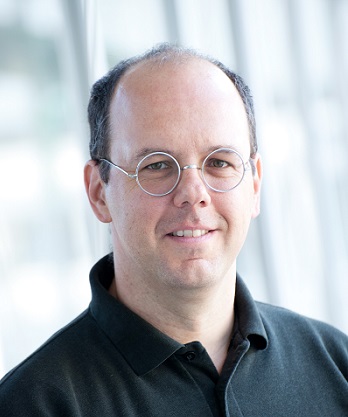The quantum world is something that many talk about but no-one sees. There must be something special if it exerts its fascination well beyond the circles of what many imagine as a mainly male community of rather eccentric scientists, to the point of attracting the attention of provocative artists and spiritual leaders.
At the Center for Integrated Quantum Science and Technology of the University of Ulm, in Germany, Tommaso Calarco could not be further away from the stereotype of the heads in the cloud researcher. “Years ago I was about to ride my bicycle, to get out of our lab at the University of Innsbruck when I found myself face to face with the Dalai Lama,” he says. “He was coming to meet the scientist behind the trapped ion experiment, Rainer Blatt.”

The Dalai Lama had travelled to the heart of Tyrol, to see with his own eyes one of the smallest particles of matter, something that is possible thanks to recent advances in quantum mechanics.
“And something that is expected to deliver soon significant progress in the field of computing power,” adds Calarco. “The principle is that we’re now able to manipulate individual atoms and to build controlled systems out of them. This has fantastic implications, as it enables a whole range of calculations or simulations, which would have been unthinkable twenty or thirty years ago.”
After the unexpected encounter with His Holiness, Calarco and his colleagues in other European research institutes are now getting use to a similarly unexpected and rather surprising presence around their labs.
Evelina Domnicth and Dmitry Gelfand form an artistic partnership that enjoys playing with the quantum world. They are collaborating with a European project coordinated by Calarco’s team, called Rysq. It is building a quantum simulator based on the so-called Rydberg atoms, which are characteristic by their very high responsiveness to magnetic fields.
“When we first met them, I thought they’d be helping us make our research more understandable to the general public, but they’re actually doing much more than that,” admits Calarco. “They are challenging us constantly, also on the scientific ground. I was personally amazed by their works at a recent exhibition in Nantes (Le Vide et la Lumière, at the Lieu Unique). That’s the kind of provocation we, on the scientific side, need to re-visit the boundaries between subjectivity and objectivity.”
Evelina Domnicth and Dmitry Gelfand’s manifesto could be summarised as bringing or taking physicality to and from the realm of quantum physics, possibly one of the most impenetrable disciplines to our senses.
“With Rysq we will work at a macroscopic device that will allow us to see charged ions, which in normal conditions, cannot be seen with your naked eye,” says Domnicth. “But the way they are trapped, lit and the electro-magnetic fields we can create around them make them visible. This can give the public an idea on how scientist work to build the quantum computing and witness how much they engage with the matter and with the world.”
youris.com provides its content to all media free of charge. We would appreciate if you could acknowledge youris.com as the source of the content.